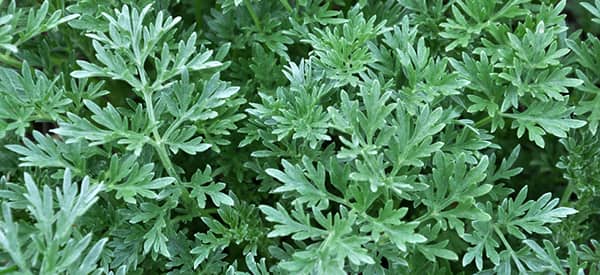
Wormwood
Wormwood (Artemisia absinthium) is an herbaceous plant cultivated as a garden ornament. It has a bitter taste, and is used as a flavoring in some wines, vermouths, and bitters. Wormwood is also an ingredient in absinthe. This botanical spirit was embroiled in importation legality and banned in many countries because of the thujone compound present in wormwood. Thujone can be toxic, hallucinogenic and addictive. It wasn’t until the early 1990s that wormwood absinthe made a modest comeback for pharmaceutical and medicinal use.
Wormwood has an interesting history that dates back to ancient civilization. It was named after Artemis, the Greek goddess of childbirth and chastity since it has the ability to stimulate menstruation and promote chastity. Wormwood also served as a worming medicine for both men and animals for many centuries. It is also being used in rituals where it is added to incense to give better psychic reception.
Where Wormwood Is Found
The wormwood plant was first cultivated on the French-Swiss border. Wormwood is a terrestrial herb found in Eurasia. It grows from Europe to Siberia and West Himalayas. It is also broadly distributed in North America, but can adapt to many climates across the world.
⇒ The Complete Map of Edible Plants: Find Out What You Have in Your Area! (Video)
How To Identify Wormwood
Wormwood blooms in the meadow and is identifiable by its uniquely-shaped leaves. They grow in a clump and are ideal in ornamental gardens. Wormwood grows bashful yellow flowers that bloom in fall and summer.
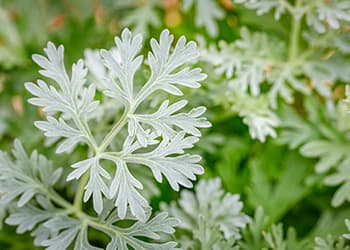 Leaves. Wormwood leaves are green with a gray or silver sheen. They resemble a pinnately compound leaf with irregularly lobed leaflets. The leaf shape can either be elliptical, ovate, pinnate, or bipinnately divided. Its basal leaves are large and deeply lobed, while the upper leaves are smaller and simple. Both sides of the leaves are covered with tiny hairs. It emits a strong scent that becomes unpleasant when crushed.
Leaves. Wormwood leaves are green with a gray or silver sheen. They resemble a pinnately compound leaf with irregularly lobed leaflets. The leaf shape can either be elliptical, ovate, pinnate, or bipinnately divided. Its basal leaves are large and deeply lobed, while the upper leaves are smaller and simple. Both sides of the leaves are covered with tiny hairs. It emits a strong scent that becomes unpleasant when crushed.
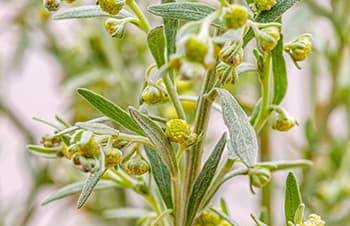 Flowers. The flowers of the wormwood are simple gold or yellow heads or florets that grow in panicles. The drooping flowers often start out green, but turn yellow as it matures. Each flower head measures only 1 to 2 mm, and the whole panicles are about 4 to 5 inches.
Flowers. The flowers of the wormwood are simple gold or yellow heads or florets that grow in panicles. The drooping flowers often start out green, but turn yellow as it matures. Each flower head measures only 1 to 2 mm, and the whole panicles are about 4 to 5 inches.
Fruits and Seeds. Wormwood grows fruits that are dry and single-seeded from two ovaries. But, only one fully matures into a seed. It is shaped almost like a perfect cylinder with its rounded top and tapered bottom. The seeds are about 1mm in size, flat, and gray-brown in color.
Roots. Wormwood is weakly rhizomatous. It has a taproot that can reach only about 2 inches deep and shallow lateral root branches can extend to about 6 feet in all directions.
Stem. The green stem of wormwood is covered with tiny hairs making it look grayish and silvery. It is round and erect, often growing up to 1.2 meters tall. The stems are grooved and branched, which develops woodiness at the base where the stems meet.
⇒ Plant Identification Guide – 400 Wild Plants That You Can Forage For (Video)
Artemisia absinthium is a member of the Asteraceae family. It is one of the common species of the genus Artemisia. The A. absinthium has two known cultivars: the Lambrook Silver and Powis Castle.
How To Grow Wormwood
Wormwood is a prolific seeder that one plant alone can produce about 100,000 seeds. These seeds germinate near the parent plant and are easily scattered by water and animals. The seeds will remain viable in the wild for three to four years, resilient to drought and fires.
Vegetative propagation of wormwood is also possible from its tissue or rootstock cuttings. It is a no-fuss plant that is easy to grow and is highly adaptable even to poor growing conditions.
Growing Wormwood from Seeds
Common artemisia absinthium is sold in packets in online and local seed stores. They are best sown either in late summer or late winter months after the last frost.
Sow the wormwood seeds in rich, organic soil either in containers or directly in the garden. Lightly cover the seeds with soil as they need light to germinate. Space them out with about 12 to 24 inches between them.
Water the wormwood seeds adequately and keep the temperature between 55 to 65⁰F. It may take the seeds two to nine weeks to germinate, depending on the conduciveness of its surroundings.
If you sow them indoors, transplant them once they have their set of first true leaves. Do this only after the last frost has gone. If you directly plant them outside, thin the seedlings out at 18 to 20 inches.
Growing Wormwood from Cuttings
Propagating wormwood from cuttings is the most viable and fast way of growing it. Take cuttings preferably from an established plant with unflowered new growth. Cut it at 10 to 15 cm and strip off the bottom half leaves. Dip it into a rooting hormone and place the cuttings in propagating soil. You can transplant the cutting once it has grown many roots about six months later.
You may also re-grow wormwood from shoots that had produced roots near the base of the mother plant. Just break the shoot away, prune it to 10 cm if it is long, and plant it in a potting mix until the roots are established.
Plant Care and Maintenance
Wormwood is adaptable to its environment and can survive drought. They do not need frequent watering at all, unless the soil becomes too dry. In its first summer, water the wormwood plant every ten days. Established wormwood plants are still good with every two to three weeks of watering.
The bitter aroma of wormwood drives away pests and insects, making them less susceptible to plant diseases. Keep in mind, however, that they become prone to root rot when exposed to severe wet conditions.
Here are a few things to remember when growing wormwood:
- Occasional watering
- Full sun
- Well-draining soil
- Regular deadheading in summer
- Pruning in winter to keep them bushier
⇒ The 10 Medicinal Seeds You Should Plant for a Complete Backyard Pharmacy (Video)
How To Harvest Wormwood
The ideal time for harvesting wormwood is at least two years after planting. Its strength and potency increase as the herb matures. To harvest the herb, snip off the upper stalk and dry them off for use in potpourri.
If you want to gather wormwood leaves for insect spray, gather the leaves near the base of the stem. These are the mature leaves that produce the potent oil. You may also harvest the full-flowering plant by cutting the entire plant off its base. Tie the stalks together and hang them upside-down to dry in a dark, but a well-ventilated place. Once thoroughly dried, you can cut off the stalks, then transfer them to an airtight container and keep it in a dark place.
What Wormwood Is Good For And Natural Remedies Made From It
Wormwood has antibacterial, antifungal, and antiparasitic qualities. Traditionally, it is considered effective medicine for common worm infections. It works not just in humans but also in animals. Farmers used to combine wormwood with common mugwort, chicory, and tansy for deworming farm animals.
Extracts of wormwood can effectively fight bacterial strains like E. coli and Salmonella. It can also inhibit the growth of fungi such as Candida. Thus, it is used for treating various yeast infections.
The artemisinin compound in its leaves and flowers are the effective drug of choice for malaria and other diseases. For many years, folk medicine considered wormwood, specifically the A. annua or sweet wormwood, for malarial treatment. A recent study on mice also considers Artemisia absinthium for its source of artemisinin. The study screens the plant for its antimalarial effects on Plasmodium berghei, a protozoan parasite targeting rodents.
The bioactive compounds in wormwood are useful in treating digestive ailments. It helps promote bile production and encourages better digestion. Wormwood is also essential in promoting gallbladder and liver health.
⇒ The “Stomach Band-Aid” (Video)
SIBO (small intestinal bacterial overgrowth) is also remedied by wormwood. Wormwood herbal therapy is as effective as oral antibiotics, but with lesser side effects.
Wormwood, as an analgesic, can cure fever, especially those caused by intestinal parasites. Taking wormwood will induce sweat and reduce the body temperature.
The herb is also used as a traditional emmenagogue that stimulates menstruation and regulates the menstrual cycle. With its ability to induce menstrual flow, it was anciently used by women as an emergency contraceptive.
The bitter taste of wormwood is generally considered for treating symptoms pertaining to the regions of the stomach. It has powerful actions such as:
- Stomachic
- Analgesic
- Anthelmintic
- Alterative
- Anesthetic
- Emmenagogue
- Depurative and antioxidant
- Antifungal
- Antimicrobial
The health benefits of wormwood make it a valuable plant for treating:
- Digestive ailments

- Crohn’s disease, SIBO, IBS
- Fever
- Menstrual disorders
- Intestinal parasite and worm infections
- Malaria
- Anxiety
- Loss of appetite
- Gallbladder and spleen problems
- Scabs and freckles, skin problems
What Parts Of The Wormwood Are Used For Remedies?
The whole wormwood plant is useful as a home remedy. Its roots contain volatile oils, but are not as potent as those found in the leaves and flowers.
The bitter leaves of wormwood, either fresh or in dried form, are used as tea or infusion. Its dried leaves are most recommended for herbal remedy use because it contains less thujone. Thujone is a poisonous chemical in wormwood, which has made the herb debatable in liquor production. That’s because the distillation process is likely to increase the thujone concentration.
Wormwood leaves can be applied externally as a poultice for skin problems. Its fresh form may also be eaten for digestive relief.
Artemisinin is often extracted from wormwood flowers where it is highly concentrated.
The natural form of wormwood, fresh or dried, is difficult to obtain. They might not be available in your locality, but can be sourced from online retailers. But, wormwood is also available in other forms such as essential oil, tablet, capsule, powder, tinctures, or liquid extracts.
Wormwood Tea Recipe
Ingredients:
- ½ to 1 tsp. dried or 1 tbsp. fresh wormwood
- 1 cup boiling water
- Peppermint or star anise, to taste (optional)
Steps:
- In a teabag, put ½ to 1 tsp of wormwood inside. Make sure not to use more than a teaspoon of the leaves since it is very bitter and strong.

- Steep the wormwood leaves in boiling water for 5 to 15 minutes.

- Remove the teabag and serve. If you want to counter the bitterness of the tea, add peppermint or anise according to taste.

How to use this remedy:
This wormwood tea is ideal for relieving bloating and indigestion. It is best taken before a meal to prevent gas buildup that causes bloating. You may also occasionally take this as an energy tonic or to relieve anxiety.
The dosage of the tea varies depending on where you want to use it. Take note, it should only be taken in a small amount for no more than a few days.
Because of its thujone component, it is highly recommended to consult a healthcare professional to avoid toxic poisoning.
What Plants Resemble Wormwood
| Features | Wormwood (Artemisia absinthium | Tansy (Tanacetum vulgare) | Ragweed (Ambrosia artemisiifolia) |
|---|---|---|---|
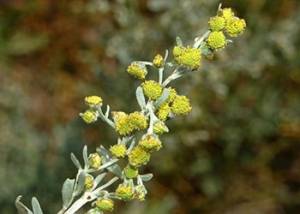 | 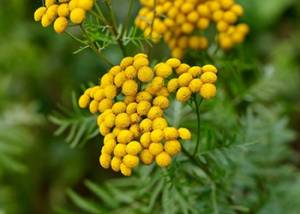 | 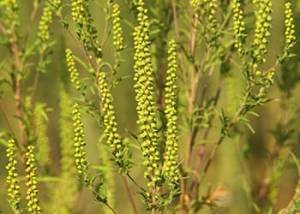 | |
| Size | Up to 120 cm | 200 cm | 180 cm |
| Leaves | Green; hairy; spirally arranged; irregularly lobed; several shapes | Green; alternate; irregularly lobed | Green; simple; alternate; irregularly lobed |
| Flowers | Pale yellow; tubular florets; panicles; drooping | Yellow; button-like; clusters | Green/yellow/brown; male flower in racemes; female flowers in an axillary cluster |
| Fruits/Seeds | Cypsela; no pappus; gray-brown seeds | Achenes; yellowish-brown | Woody achene with crown; brown |
| Stem | Straight; tall; grooved; round; branched | Straight; tall; branched at the top | Straight; hairy; grooved |
| Scent | Bitterish herbal; vermouth scent | Camphor-like with hint of rosemary | Pungent; unpleasant |
Warnings And Cautions
Wormwood is highly toxic in excessive consumption, and therefore, unsafe in large amounts and long-term use. Any wormwood supplement should not be used for more than four weeks. Make sure that the supplement or liquor containing wormwood is thujone-free.
Do not take wormwood if you are pregnant and lactating. It is an abortifacient, which can cause miscarriage. It is also unsafe for babies when leached through breastmilk.
Wormwood can further cause allergic reactions, especially in people with ragweed allergies.
Do not take the supplement if you have the following conditions: epilepsy and seizure disorder, kidney disorder, porphyria.
Before taking any herbal food supplement, always ask for advice from a health professional.
5 Warning Signs You Have IBS (Video)
Drink These to Reduce Bloating

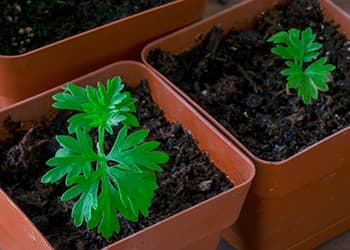
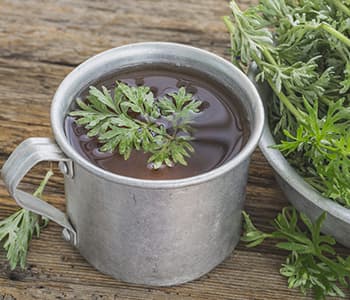
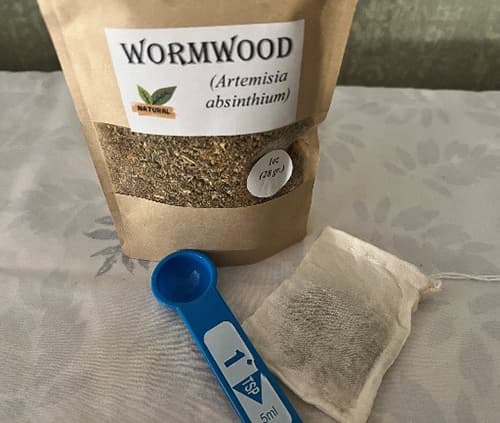
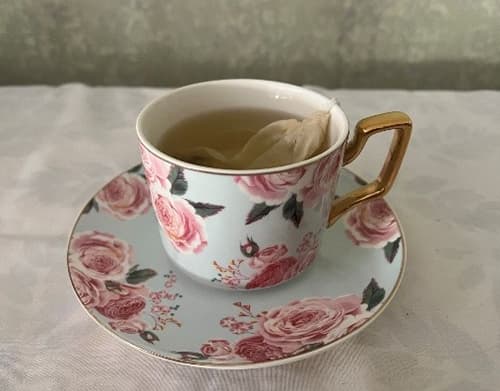
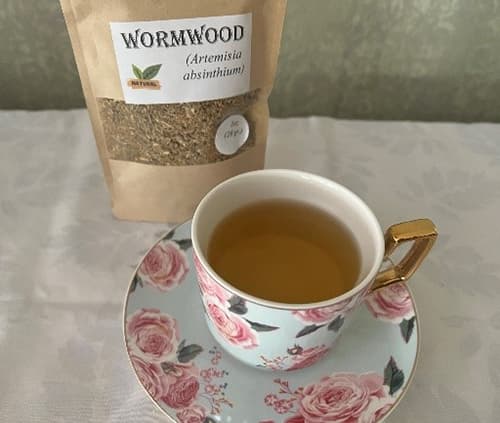

Thujone is not present in tea form. Alcohol extraction is necessary therefore tea is safe. Also it may lower blood sugar levels. That said, said tea is not for the faint hearted. I drink one mug everyday and seldom twice.
Why is it not for the faint of heart?
Really really bitter just hard to drink as Rory said not for the faint hearted,
Do you have a link available for purchase?
I can send you a bunch, I’ve got it growing all over, it spreads. I can dry it also, if you want. No spray.
Hello April,
Wormwood is available online on Amazon, Etsy, and many health stores. It is best to use Google to find one that delivers to your area.
Many blessings and good health!
Is Sweet Annie similar to Wormwood?
Hello Olga,
While Sweet Annie (Artemisia annua), or Sweet Wormwood, is a non-poisonous species of Artemisia that is native to temperate Asia, wormwood (Artemisia absinthium) is a moderately-poisonous member of the genus Artemisia that is native to Eurasia and Northern Africa. So, this is the main distinction between sweet wormwood and wormwood.
Sweet Annie, has been used in traditional Chinese medicine for fevers, inflammation, headaches, bleeding, and malaria.
Many blessings and good health!
I have recently found some sweet wormwood. Its red now with everything changing in the fall. How much would we use? Maybe 1 teaspoon only for a fever?
I have heard that it is good for cancer. Some reckon drying the wormwood gets rid of the thujone.
Our wormwood grows bountifully in our yard- have lots of dried wormwood in Sydney. Bugs hate it in the area where we have it. Interestingly, placing cuttings around plants that were being attacked by bugs did not work.
Is safe to take for cancer treatment
Hello Sonny,
The artemisinin compound takes advantage of cancer cell’s high iron levels. Artemisinin is highly toxic in the presence of iron, but harmless otherwise. Cancer cells need a lot of iron to maintain the rapid division necessary for tumor growth.
However, a healthcare professional should be consulted about potential interactions or other possible complications before using any herbal remedies.
Many blessings and good health!
Thank you for the article. And I understand you have to talk about the “danger ” in Artemisia , but there is really nothing that dangerous. My family is using Artemisia for generations without any issue. My grandmother loved the tea at least once a week . It was regularly used as a dewormer for all of us ( from kids to grandfather) and animals ( from chickens, dogs, cats …to cows. ) You can take simply the leaves (2-3) and eat them. The animals just get the leaves pushed till they swallowed it. (and than some treat followed ). And now in our modern world I have my AA on my backyard and the tradition of regular use of it continue in the same manner. Just the tea is little too much for me. I like to fill a jar with AA leaves and fill it up with vodka . Let it sit for 3-4 weeks and then use it ( for digestion 1tbs with water) when i need it . And since we have parasites everywhere around us ( viruses are parasites too) , one cannot go wrong with Artemisia. It is the #1 herb for me.
And when Jesus talked about something bitter, he used Artemisia as an example.
I am getting ready to strain out my first tincture of Artemesia annua. You mention that you use 1 Tablespoon…..I was just wanting clarification, that you didn’t actually mean 1 teaspoon? It just seemed like a lot.
I had purchased wormwood capsules in the past, with good results….so I am looking forward to trying my own tincture version.
And Salomos in:
Proverbs chapter 5
It’s 1 TBS not teaspoon
I make an alcohol tincture with wormwood leaves. It’s really potent as an antiparasitic. Never had a problem with it (that I can tell) being poisonous, no deleterious effects. Thanks for the article! Very informative.
Hello Harmony,
Thank you so much for sharing your personal experience with us!
We are glad to hear you enjoy the article.
Many blessings and good health!
Where can you get it and know it’s from a reliable source?
Hello Lynne,
Wormwood is available online on Amazon, Etsy, and many health stores. It is best to use Google to find one that delivers to your area.
Many blessings and good health!
Do Artemisia Absinthium and Artemisia Annua have the same effect?
I have read that Artemisia Annua has been used in trials against cancer.
What doses and for how long can be recommended for a person with lung cancer?
I have bought Artemisia Absithium and drink it as tea – what doses and for how long should I use it for bad liver and spleen.
many blessings to you